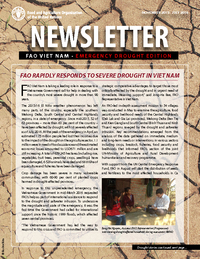Focal point
Location
The Food and Agriculture Organization of the United Nations leads international efforts to defeat hunger. Serving both developed and developing countries, FAO acts as a neutral forum where all nations meet as equals to negotiate agreements and debate policy. FAO is also a source of knowledge and information. We help developing countries and countries in transition modernize and improve agriculture, forestry and fisheries practices and ensure good nutrition for all. Since our founding in 1945, we have focused special attention on developing rural areas, home to 70 percent of the world's poor and hungry people.
Members:
Resources
Displaying 1386 - 1390 of 5074Gender and Land Statistics. Recent developments in FAO’s Gender and Land Rights Database
Although there is global consensus that women’s land rights are fundamental for the realization of food security and rural development, accurate and reliable statistics to monitor the attainment and realisation of these rights are still lacking. Indeed, the lack of clear and accurate statistics on landownership and land management– that are disaggregated by sex - is problematic for developing clear policy responses to, and for monitoring of, inequalities faced by women and men in rural areas.
Global guidelines for the restoration of degraded forests and landscapes in drylands. Building resilience and benefiting livelihoods.
From the content:
2 Drylands and the benefits of restoration 5
2.1 What are drylands? 5
2.2 The importance of forests and trees in drylands 6
2.3 Key challenges in drylands 8
2.4 Restoration in drylands 13
3 Guidelines for policymakers and other decision-makers: establishing a strong enabling environment 19
3.1 Enabling and investing in assessment and monitoring 19
3.2 Addressing the drivers of land degradation by engaging in cross-sectoral dialogue and planning at the landscape scale 22
FAOVN Newsletter - Emergency Drought Edition
A brief summary of the emergency drought situation with news from FAOVN field office.









